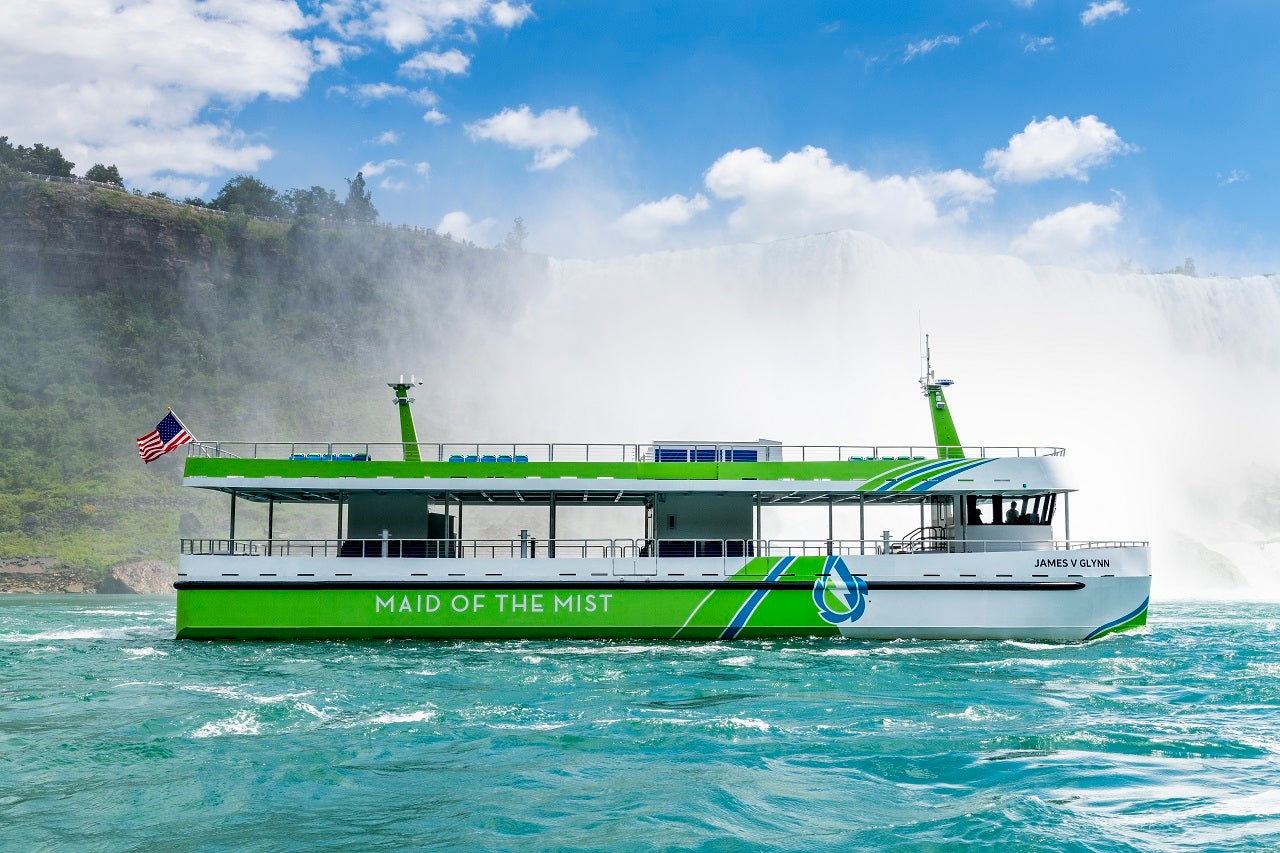Maid of the Mist launched two new-generation all-electric passenger ferries for the tour of Niagara Falls in the US.
The zero-emission ferries have been christened James V Glynn and Nikola Tesla in honour of the Maid of the Mist chairman, and the well-known energy pioneer, respectively.
The new electric vessels were built as a part of the $70m revitalisation initiative of Niagara Falls State Park, which also involves the renewal of the park’s major viewing areas.
The vessels entered service in October 2020. Maid of the Mist vessels operate from April through the first week of November. The vessels leave from their downstream dock to the base of Niagara Falls every 30 minutes and serve approximately 1.6 million guests annually.
Maid of the Mist background
Maid of the Mist has been providing tour services at the Niagara Falls waterfalls and the Niagara River Gorge for more than 100 years.
The first Maid of the Mist steamboat completed its maiden voyage between the US and Canada in 1846. The Maid of the Mist was re-branded as a tourist sightseeing service provider, after the construction of a suspension bridge between the countries in 1848.
The first diesel-powered steel-hulled Maid of the Mist vessels were introduced in 1955. In 2018, the company started research to replace diesel boats with electric propulsion.
In May 2019, Maid of the Mist announced the construction of two new emission-free vessels to make the New York State a premier environment-friendly tourism destination.
The two new electric vessels replaced the Maid of the Mist VI (1990) and Maid of the Mist VII (1997) diesel-powered vessels in the fleet. Both the vessels had the capacity to carry 600 passengers.
Maid of the Mist electric ferries design and features
The new 28m-long catamaran-style electric vessels feature twin hulls made of 5086 H116 marine-grade corrosion-resistant aluminium alloy. The two independent power systems on board the vessel help in increasing the resilience of operations by generating redundancy.
The wide stance offers a smooth and quiet ride to passengers and also allows them to better enjoy Niagara Falls.
The new boats provide more space and comfortable ride to its passengers. The modular vessel further integrates ABB’s zero-emission technology and generates no exhaust fumes, engine noise and vibrations.
Propulsion and power
The ferries are powered by a pair of 316kWh lithium-ion battery packs placed across the two hulls. The batteries supply power to the electric propulsion motors that can generate up to 400kW output, controlled by ABB’s power and energy management system (PEMS). The system controls the power distribution according to the energy usage onboard.
Each trip consumes approximately 38kWh power. The lithium-ion batteries of the vessels can be recharged in seven minutes, using locally generated hydroelectricity, during the embarking and disembarking of passengers at the dock.
Contractors involved
New York State Parks, the New York Power Authority partnered with Maid of the Mist, and ABB to launch the first all-electric vessels in the US.
The vessel was designed by Propulsion Data Services, while Burger Boat Company was responsible for the construction.
ABB supplied switchboards, drives and the integrated power and propulsion system, as well as an onshore charging system. It also provided Ability Marine Remote Diagnostic System for remote equipment monitoring and predictive maintenance, as well as installed the ship-to-shore battery charging connection.


